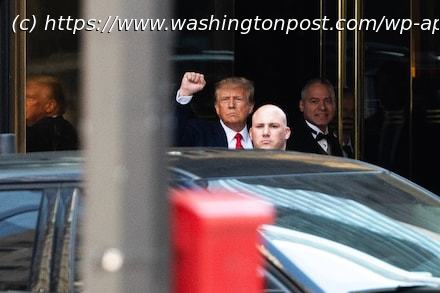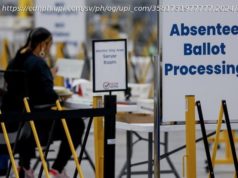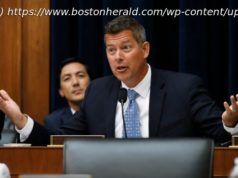What the historic indictment of former president Donald Trump says about the crimes he is charged with.
Manhattan District Attorney Alvin Bragg, in a sweeping statement of facts unsealed Tuesday, accuses Donald Trump of engaging in a wide-reaching, more than two-year scheme to illegally influence the 2016 presidential election by suppressing potentially negative information about himself.
What Trump wanted to keep quiet included allegations he had engaged in a sexual dalliance with an adult-film actress and an affair with a Playboy model, and fathered a child out of wedlock, Bragg said in state court documents.
But the criminal charges detailed in the grand jury indictment against Trump are narrower, accusing the former president of falsifying business records 34 times, as he wrote checks to his lawyer Michael Cohen to reimburse Cohen for $130,000 paid to actress Stormy Daniels before the 2016 presidential election.
The gulf between the breadth of the election interference that prosecutors have alleged and the nuts and bolts of the charges they have brought against him form the crux and challenge of the criminal case against Trump.
“The prosecutor wants a story and a theory that the jury is going to find compelling and moving. Technical violations and false records are not that,” said Cheryl Bader, an associate professor at the Fordham University School of Law. “So the prosecutor is going to have to show that the real underlying story is about how Trump deceived the American public to get elected.”
Falsifying business records is a felony in New York only when it is committed with an intent to commit or conceal another crime. At a news conference Tuesday after Trump appeared in court, Bragg, a Democrat, said prosecutors believe that Trump, a Republican, faked his business records as a way to cover up the election scheme, which he said was illegal under New York state election law and involved a campaign contribution that exceeded the cap set by federal law.
“Why did Donald Trump repeatedly make these false statements? The evidence will show that he did so to cover up crimes relating to the 2016 election,” Bragg explained.
In a 13-page statement of facts, prosecutors allege the scheme began in 2015, when Cohen and the chief executive of American Media Inc., which owned the National Enquirer tabloid, agreed that AMI would pay for negative stories about Trump and then never publish them, a technique known in the tabloid industry as “catch and kill.”
The document outlines three efforts to kill negative stories about Trump over the course of the 2016 campaign. In one, AMI agreed to pay $30,000 to a Trump Tower doorman who was allegedly trying to sell information that Trump had fathered a child out of wedlock. Then, in the summer of 2016, AMI agreed to pay $150,000 to buy the story of Playboy model Karen McDougal, who had said she had an affair with Trump. In October 2016, Cohen agreed to pay $130,000 to buy the silence of Daniels, who said she’d had a sexual encounter with Trump at a celebrity golf tournament in 2006.
Trump has denied the allegations in each instance.
The descriptions of the tawdry stories dating to the 2016 campaign hold few new revelations — much of the detail outlined by Bragg emerged in years of news stories about Trump’s behavior and in Cohen’s own 2018 guilty plea for various crimes, including federal campaign finance violations.
Home
United States
USA — Political Trump charged with narrow violations — in pursuit of broad scheme to...






